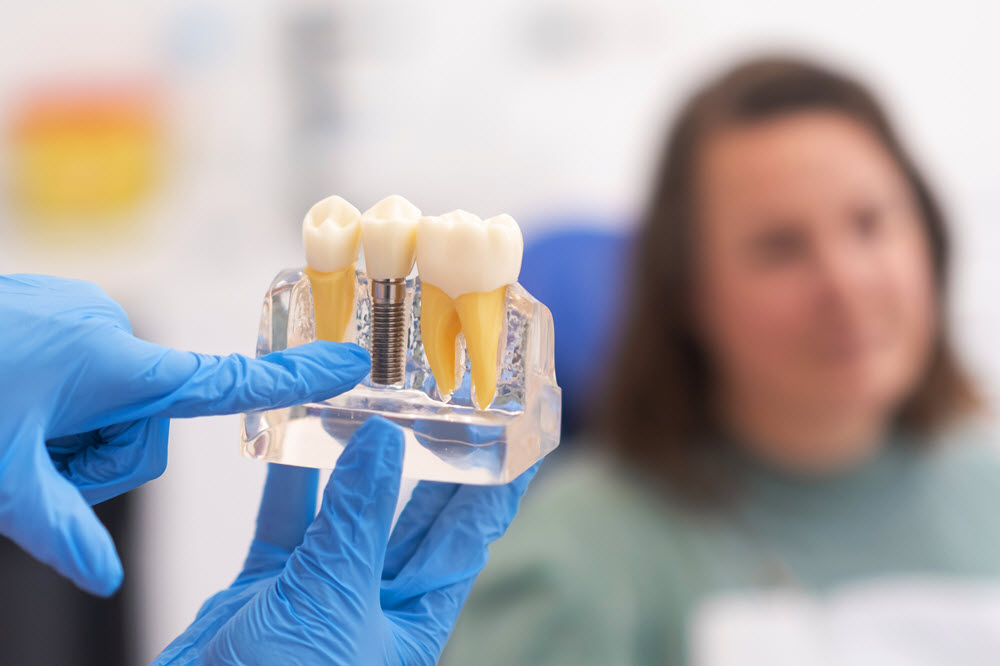
Implants or Bridges :
Tooth loss is extremely common. It’s estimated that 69 % of adults 35 to 44 have lost at least one adult tooth. By age 74, about a quarter of Canadian’s will lose all of their adult teeth.
When you lose a tooth, it’s essential to get a proper replacement to keep the rest of your teeth aligned. Replacement teeth can also help you maintain your facial shape and avoid difficulties with eating or speaking. Two of the most common options are dental bridges and implants.
Dental bridges are false teeth held in place by the teeth around your missing tooth. They’re usually made from materials like porcelain or plastic to match your natural tooth color. They can cover one or several missing teeth.
Dental implants are artificial tooth roots usually made from titanium. They’re mounted into your jawbone with screws to hold a crown or bridge in place.
Choosing between a dental implant and a dental bridge depends on various factors, including your specific dental needs, oral health, budget, and personal preferences. Let’s compare the two options to help you make an informed decision:
- Dental Implant:
- A dental implant involves surgically inserting a titanium post into the jawbone to replace the missing tooth root.
- Once the implant fuses with the jawbone (osseointegration), a custom-made crown is attached to the implant, mimicking the appearance and function of a natural tooth.
- Advantages:
- Provides a permanent and stable solution.
- Preserves jawbone density and prevents bone loss.
- Does not require altering adjacent teeth.
- Offers excellent longevity, often lasting a lifetime with proper care.
- Considerations:
- Requires oral surgery and a healing period before the crown can be placed.
- Typically more expensive upfront compared to a dental bridge.
- Not suitable for everyone, especially individuals with insufficient jawbone density.
- Dental Bridge:
- A dental bridge consists of one or more artificial teeth (pontics) anchored to adjacent natural teeth (abutment teeth) or dental implants.
- The adjacent teeth are prepared by removing some enamel to accommodate dental crowns, which serve as anchors for the bridge.
- Advantages:
- Non-surgical procedure (except for implant-supported bridges).
- Faster treatment process compared to dental implants.
- Generally, less expensive upfront, particularly for traditional bridges supported by natural teeth.
- Considerations:
- Requires altering adjacent teeth, which may compromise their structural integrity.
- May contribute to increased strain on the supporting teeth over time.
- Less stable than dental implants, especially in the long term.
- Bridges supported by natural teeth may increase the risk of decay and gum disease in those teeth.
Ultimately, the best choice between a dental implant and a dental bridge depends on your individual circumstances and preferences. It’s essential to consult with your dentist, who can evaluate your oral health, discuss your treatment options, and recommend the most suitable solution tailored to your needs.


